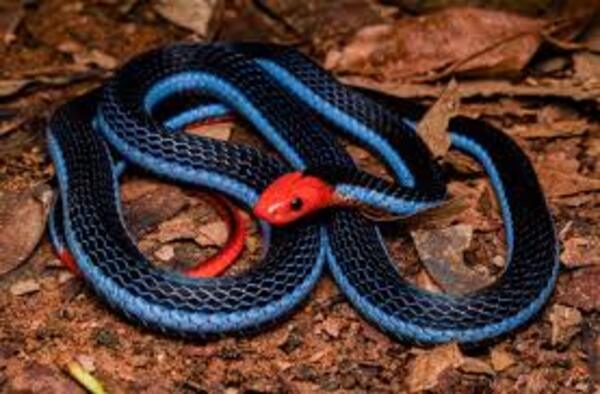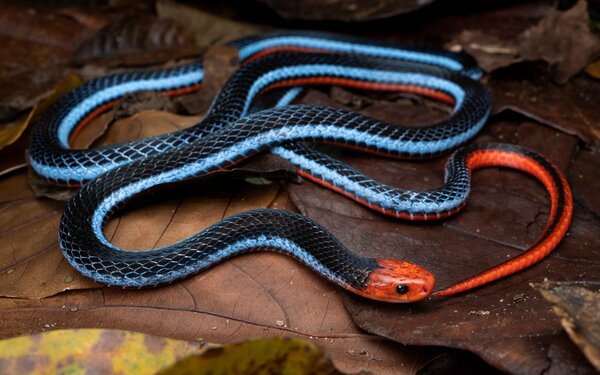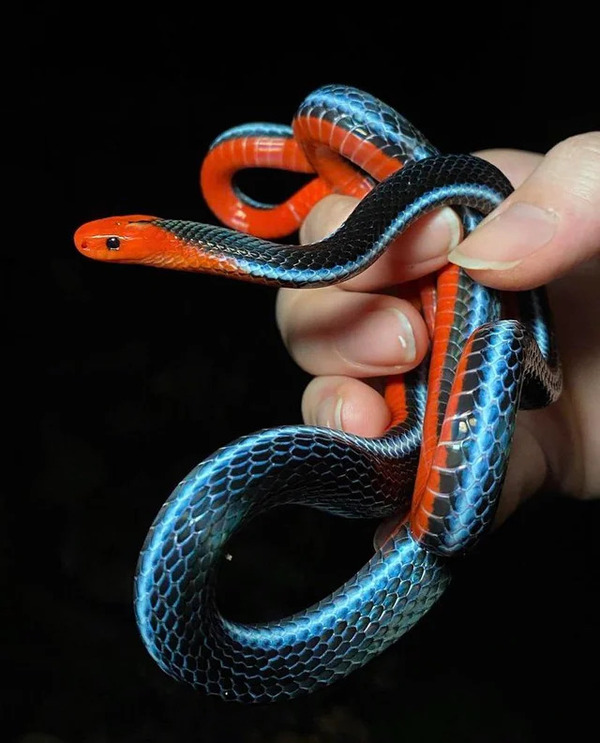If you're fascinated by snakes, the blue coral snake is a species you absolutely need to know about. It's a stunningly beautiful reptile with a blue body and a striking red head and tail. But don’t let its looks fool you—this snake packs one of the most potent venoms in the animal kingdom. Let’s dive into the world of the blue coral snake and explore everything about it, from its appearance and habitat to its venom and fascinating behavior.

The blue coral snake, scientifically known as Calliophis bivirgatus, is part of the coral snake family. It's also called the "Malaysian blue coral snake" because it’s found mainly in Southeast Asia. This snake is famous for its electric blue scales and vibrant red markings, making it one of the most eye-catching snakes in the wild.
Size: It can grow up to 4–6 feet long, making it relatively large for a coral snake species.
Color Pattern: The body is a deep metallic blue, with a vivid red head and tail. Some people describe it as a living piece of art.
Behavior: It’s a shy, solitary snake, mostly active at night.
These snakes thrive in the tropical rainforests of Southeast Asia, including Malaysia, Thailand, Indonesia, and Singapore. They prefer areas with dense vegetation and moist environments, often hiding under leaf litter or near streams.
Habitat: They’re typically found in lowland forests but can sometimes venture into higher elevations.
Range: You’re most likely to spot them in countries like:
Malaysia
Thailand
Indonesia
Singapore
Deforestation poses a significant threat to their survival, as their rainforest homes are being destroyed at alarming rates.

Let’s talk about the elephant in the room—this snake’s venom. The blue coral snake is highly venomous, and its bite can have serious effects on the nervous system.
Neurotoxic Venom: The venom works by overstimulating nerve cells, essentially causing them to fire uncontrollably.
Unique Toxin: Scientists have discovered that its venom contains compounds that act almost instantly, targeting the victim’s nervous system. This makes it one of the fastest-acting snake venoms.
Medical Research: Interestingly, researchers are studying this venom for potential use in painkillers and neurological treatments.
Despite its striking appearance and potent venom, the blue coral snake has a fairly simple diet.
Prey: It feeds primarily on other snakes, including smaller venomous species. This has earned it the nickname "snake-eater."
Hunting: With its lightning-fast venom, it can quickly immobilize prey, making it a highly effective predator.
The blue coral snake isn’t aggressive toward humans unless provoked. Its bright coloration is a classic example of aposematism—a way of warning predators that it’s dangerous.
Defensive Behavior: When threatened, it may flatten its body to display its vibrant colors more prominently.
Predators: Larger animals like birds of prey or monitor lizards may occasionally prey on it, but its venom deters most would-be attackers.
Spotting a blue coral snake in the wild is a rare treat, but it’s important to know what you’re looking at:
Body Color: A shimmering blue body.
Head and Tail: Bright red, making it easy to recognize.
Size: Long and slender, reaching up to 6 feet.
Remember, if you ever encounter one, keep your distance!
The blue coral snake’s beauty and habitat make it vulnerable to human activities.
Endangered Status: While not officially listed as endangered, its population is declining due to habitat destruction.
Deforestation: The rainforests where it lives are being cleared for agriculture and development, threatening its survival.
Protecting these snakes means protecting their homes—the lush tropical forests of Southeast Asia.

It’s a Snake-Eater: Its diet primarily consists of other snakes, making it a top predator in its ecosystem.
Fast-Acting Venom: Its venom is so unique that scientists are studying it for medical breakthroughs.
A Living Rainbow: With its vibrant colors, the blue coral snake is often considered one of the most beautiful snakes in the world.
Rarely Seen: These snakes are elusive, making encounters in the wild incredibly rare.
Q: Is the blue coral snake dangerous to humans?
A: Yes, its venom is highly toxic, but bites are rare as the snake avoids human interaction.
Q: Where can I find a blue coral snake?
A: They are native to the rainforests of Southeast Asia, particularly in Malaysia, Thailand, and Indonesia.
Q: Can you keep a blue coral snake as a pet?
A: Absolutely not. It’s a venomous species that requires specific care and poses significant risks.
The blue coral snake is a breathtaking yet deadly marvel of nature. Whether you’re a herpetology enthusiast or just someone curious about exotic wildlife, this snake is worth learning about. Its stunning appearance, fascinating behavior, and powerful venom make it one of the most extraordinary snakes in the world. Just remember—this beauty is best admired from a safe distance!
animal tags: blue-coral-snake
We created this article in conjunction with AI technology, then made sure it was fact-checked and edited by a Animals Top editor.